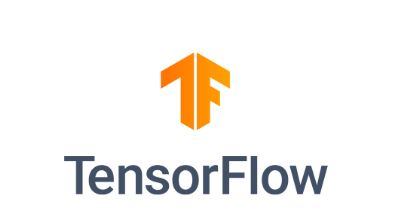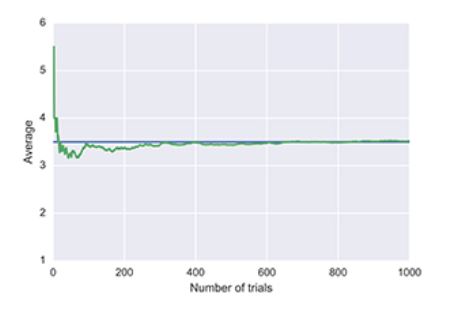
Introduction
Are you a python engineer doing development for some time and wondering what you need to learn about Python in 2020?
Are you a python engineer looking to venture into data science, machine learning, or Artificial Intelligence?
Read on to see what then you need to learn about Python in 2020. We discuss incredible python applications, libraries, tools, and practices for data science, machine learning, and AI.
Modern Python Applications that Engineers need to know in 2020
Data Science
Python usage is on the rise. Since the language is flexible and multifaceted, it is easy to read and, therefore, a language of choice in the field of data science. Python libraries such as Theano and SciPy help python engineers to perform advanced data manipulation and cleaning up data.
Machine Learning and AI
Python gives access to an extensive collection of libraries and frameworks for artificial intelligence and machine learning.
Automation Testing
Python is one of the most versatile programming languages, and as such, it has a test automation framework that has qualities such as;
- Quality framework script
- Usability of test data syntax
- It supports parallel running of tests
What Tools do Python Engineers need to learn;
(i) In Data Science
Scikit-Learn

Scikit-Learn is an open-source python tool used in data science. It can also be used in machine learning. Python engineers use it extensively for data mining as well as data analysis. It has a remarkable speed when performing tests on datasets.
Its main characteristics are regression, classification, model selection, clustering, and preprocessing. It also offers a consistent and user-friendly API.
Theano
Theano is a python library. It is designed primarily to express multi-dimensional arrays. Theano allows a python engineer to define and optimize computations that comprise multi-dimensional arrays.
Its unique features are efficient symbolic differentiation, extensive unit testing, transparent use of GPU, dynamic C code integration, and its ability to optimize speed and stability.
SciPy
SciPy is another open-source python library used mainly for scientific and technical computing. It is a great tool used for manipulation of numbers on a computer and visualizing the results.
It leverages other python packages such as IPython and NumPy to create libraries for common mathematical-oriented tasks.
Keras
Keras is a python based high-level neural network library. It is open-source, just like SciPy and Scikit-Learn. Keras allows python engineers to express neural networks easily due to its top qualities, which include being easily extensible, user-friendly, and modularity.
(ii) In Automation Testing
Robot Framework
The Robot Framework is an open-source generic python-based test automation framework. It is designed mainly for acceptance test-driven development and acceptance testing. Robot Framework uses tabular test data syntax and integrates numerous frameworks that have different requirements for test automation.
Selenium
Selenium is one of the best python development tools that every python engineer need to learn and use. It is an open-source test automation framework used primarily for web applications. A python engineer will be able to write tests in Java, PHP, C#, .Net, Ruby, and other programming languages using Selenium.
TestComplete
Unlike Selenium and Robot framework, which are open-source, TestComplete is a proprietary automation testing software. It supports web, mobile, as well as desktop automation testing. TestComplete supports numerous scripting languages such as C++ script, Python, and VBScript.
Best Python Libraries for AI and Machine Learning
Python Pandas
Python Pandas is an open-source library that Python engineers use for data manipulation and analysis due to its wide range of tools. Using this library, a python engineer can read data from different sources such as JSON files, Excel, CSV, and SQL databases.
TensorFlow Python

TensorFlow is a python machine learning library used to perform high-end numerical computations. It employs abstraction making it very beneficial to ML and AI projects. It can handle handwritten digit classification, NLP (Natural Language Processing), PDE (Partial Differential Equation), recurrent neural networks, and word embedding.
Seaborn Python

Seaborn Python library offers a high-level dataset based interface that python engineers use to make excellent statistical graphics. Seaborn makes it easy to create heat maps, time series, and violin plots.
NumPy Python
NumPy is the short form for Numerical Python. It is a linear algebra Python library. NumPy is an essential library since most machine learning packages such as Scikit-Learn, SciPy, Mat-plotlib, etc., make use of it. It performs scientific computations and is widely used in binary functions such as handling sound waves and images.
Modern Python Practices to learn in 2020
Python has evolved over time. Some practices have also evolved, and others were overtaken by events. A few of the best practices that every Python engineer should know in 2020 include;
Use collections.abc for custom collection types
In Python language syntax, the abstract base classes present in collections.abc provides a Python engineer with the components used to build custom collection types. These classes are fast and well-tested hence suitable for use.
Use os.scandir() instead of os.listdir()
In Python libraries, the os.scandir() function is more efficient and faster that os.listdir(). Make use of os.scandir() where you previously used os.listdir() function.
Use asyncio only where it makes sense
In Python application design, the asynchronous features enable single processes to avoid blocking I/O operations. Concurrency can be achieved by running several python processes, whether using asynchronous I/O or not.
Conclusion
Are you a Python engineer looking to sharpen your Python skills or being a better developer in 2020? Consider the Python applications, tools, libraries, and practices discussed above.
The libraries and tools outlined in this article will be very valuable for your AI and ML projects. They will provide you with explicit functions that you can reliably build on.







